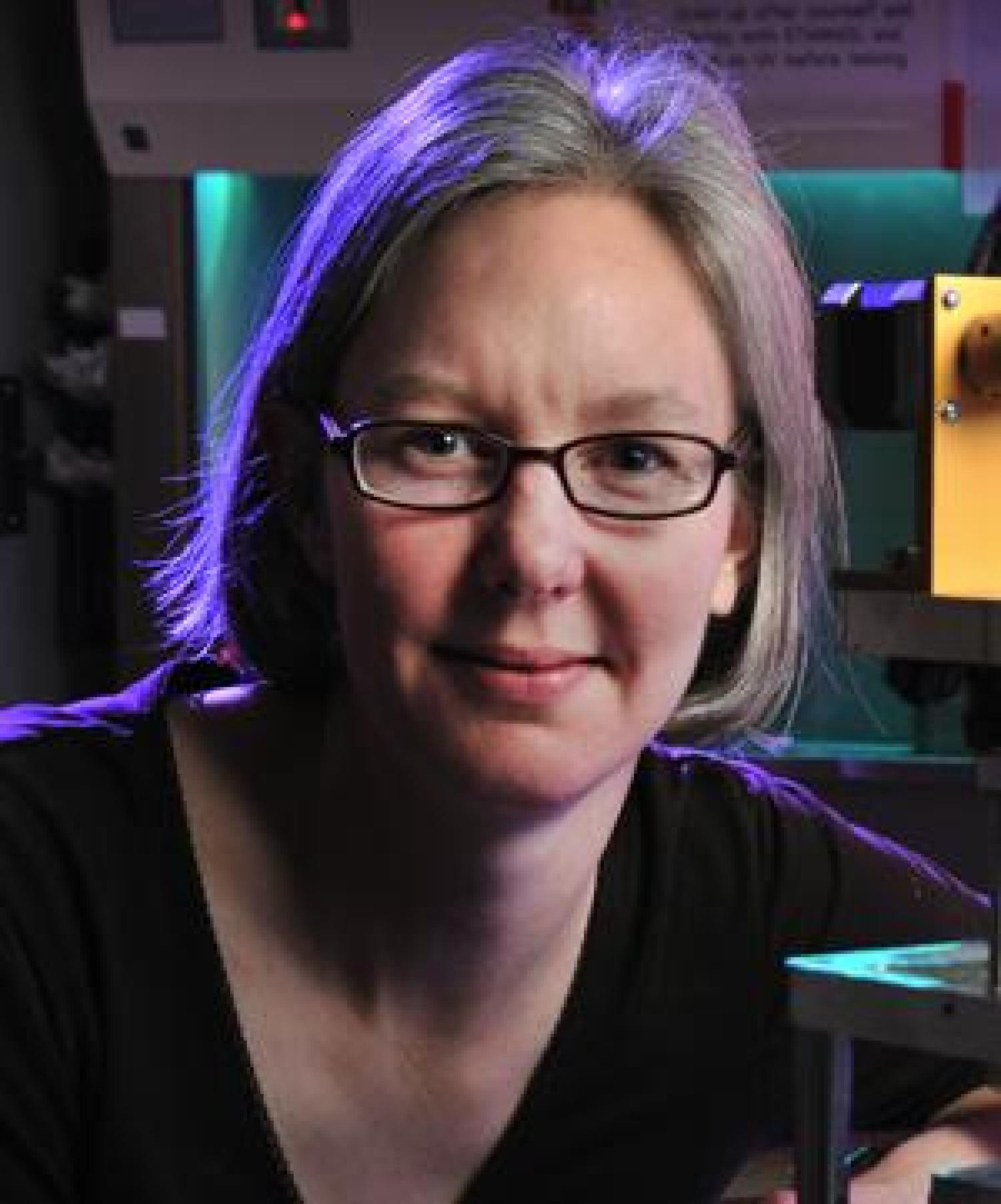Stephanie Bryant
- Professor
- Associate Director, Materials Science & Engineering Program
- CHEMICAL AND BIOLOGICAL ENGINEERING

Education
B.S., University of Texas, at Austin, (1995)
Ph.D., University of Colorado, at Boulder, (2002)
Post-doctoral Research Position, University of Washington, (2003-2005)
Research Interests
Functional Tissue Engineering, Photopolymerization, Biomaterials
The overall research objective of my group is to combine novel cell scaffold development with mechanical cues to direct and guide tissue growth in the appropriate composition to yield a functional and integrated tissue. Tissues in the body are continually subjected to mechanical stresses. It is well known that cells detect and respond to mechanical stresses by metabolic alterations that are mediated through specific mechanotransduction pathways. Photopolymerized hydrogels offer a unique medium with which to design a wide array of scaffolds from different chemistries that exhibit a range of macroscopic properties and degradation profiles. We are interested in exploiting the hydrogel environment to study mechanotransduction pathways as well as developing novel scaffolds combined with mechanical conditioning for tissue engineering. In particular, our group is focused primarily on cartilage tissue engineering, but will soon be expanding into cardiac muscle tissue engineering.
B&B Daniel I.C. Wang Award, 2011
Leverhulme Visiting Professorship, 2011
Biotechnology and Bioengineering Daniel I. C. Wang Award (2011)
Provost's Faculty Achievement Award (2010)
Patten Faculty Fellow, CU-Boulder (2009 - 2012)
NSF Career Award (2009 - 2014)
Dean's Faculty Fellowship, College of Engineering and Applied Science (2009)
New Inventor of the Year, CU-Boulder (2007)
Dean’s Award for Professional Progress, College of Engineering and Applied Science, CU (2007)
University of Colorado, Junior Faculty Development Award (2006 - 2007)
National Institutes of Health Individual Postdoctoral Fellow, Ruth L. Kirschstein NRSA (2003 - 2005)
I. Villanueva, C.A. Weigel, and S.J. Bryant. Cell-matrix interactions and mechanical loading influence chondrocyte response and gene expression in PEG-RGD hydrogels. Acta Biomaterialia 5: 2832-2846 (2009).
S.M. LaNasa and S.J. Bryant. Influence of ECM proteins and their analogs on skeletal and cardiac muscle cell response when cultured on 2D hydrogels. Acta Biomaterialia. 5: 2929-2938 (2009).
I. Villanueva, N.L. Bishop, and S.J. Bryant. Medium osmolarity and PCM development improves chondrocyte survival when photoencapsulated in PEG hydrogels at low densities. Tissue Engineering Part A. Accepted.
I. Villanueva, B. Klement, D. von Deutsch, and S.J. Bryant. Crosslinking density alters early metabolic activities in chondrocytes encapsulated in poly(ethylene glycol) hydrogels and cultured in the rotating wall vessel. Biotechnology and Bioengineering. 102(4): 1242-1250 (2009).
S.Atzet, S.Curtin, P. Trinh, S. Bryant, and B.D. Ratner. Degradable poly(2-hydroxyethyl methacrylate)-co-polycaprolactone hydrogels for tissue engineering scaffolds. Biomacromolecules, 9(12):3370-3377 (2008).
G.D. Nicodemus, K.A.Shiplet, S. Kaltz, S.J. Bryant. Dynamic compressive loading influences degradation of PEG-PLA hydrogels. Biotechnology and Bioengineering, 102(3):948-59 (2009).
S.J. Bryant, G.D. Nicodemus, I. Villanueva. Designing 3D photopolymer hydrogels to regulate biomechanical cues and tissue growth for cartilage tissue engineering. Pharmaceutical Research, 25(10): 2379-2386 (Invited Original Research Article).
G.D. Nicodemus and S.J. Bryant, Review: Cell encapsulation in biodegradable hydrogels for tissue engineering applications. Tissue Engineering Part B: Review, 14(2): 149-165(2008) (Invited).


